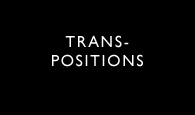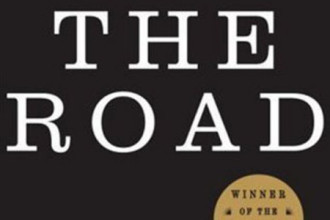When it comes to criticism and interpretation of art and culture, of the writing of books, journal articles, blog posts and facebook notes there is no end. And of course, not all of this criticism and interpretation is insightful or helpful. This applies just as much, if not more, to Christian criticism and interpretation of art and culture. Let’s face it, there are mountains of music and film reviews written by Christians that are just rubbish, soiled by a mixture of moralism, sentimentality, and anti-intellectualism.
This does not mean that Christians should stop writing reviews and engaging with art and culture in print. It just means that we need to learn how to do so more effectively. We have a humble aim in this blog to present some examples of effective engagement, and we look forward to interacting with others in order to discern if we are avoiding the common Christian pitfalls noted above.
I am adamant that Christians need to learn how to be better critics, but I am even more passionate that Christians need to learn how to be better creators. We are not creators in the sense that God is a Creator, fashioning something out of nothing, but we are creators in that God has given us abilities to respond to beauty by creating things that are beautiful. The literary critic and essayist George Steiner once said, “The best reading of art is art.” In other words, the best response to art is something artful, not just what Steiner calls “the secondary and parasitic.” The best response to poetry is to write a poem. The best response to a painting is to paint. We can talk about art all day, but responding to art with art has the potential to give a lasting interpretation. One outstanding example of responding to art with art is Matt Kish’s project of creating one drawing for every page of Moby Dick. Now that is something I can get behind! I long to see more Christians responding to art and culture by writing music, crafting poetry, or weaving a tale. Christian art should not be moralistic or sentimental, but a way of reading and interpreting the world.
If a Christian response to art and culture involves our hands, creating art and not just talking about it, a Christian response also involves our feet. Again, Steiner provides the stunning insight that “Interpretation is, to the largest possible degree, lived.” The way we live is the greatest act of interpretation. It is easy enough to be a critic on paper or the computer, but it is quite another thing to live in a way that is consistent with your own criticism. There is always room for improvement in our written interpretation, but even more, we need to be committed to learning how to be critics with our hands and feet.




Great post Wes!
Do it think it is a matter of just beginning to create? I assume you mean to encourage the development of skills (they say in order to be a master it takes at least 10 000 hours of practice)? how do we better critique each other so we don’t end up with the American Idol phenomenon of individuals being completely deluded into thinking they are the next Mariah Carey or faith hill when they cannot keep a tune?
I’ve been thinking about the development of communities of Christian artists and this matter of critique lately (which is why i’ve commented in this direction!) I know i’d benefit from further critique of my photography and writing – I can see but a small number of their flaws and i suspect the depth of their influence is pervasive.
Yes, I definitely think that in order to be critics with our hands we need to be skillful creators, and not just creators of something kitschy and sub-par. It is essential for Christians artists to hold themselves and each other to a high standard of excellence, and one of the best ways I see of doing this is to lead by example. To adapt Steiner, the best interpretation of bad art is good art. And I am definitely in favor of creating networks and communities of Christian artists where this kind of conversation, creation, and development can take place! I think there are several examples of these types of networks in the “organisation” links in the left panel, but these can happen on the grassroot level as well.
One thing that interests me about this post is the apparent contrast being made between the critic who engage with culture “in print” and those who engage with their “hands and feet.” Rather than highlighting the differences, might it not be helpful to point out that art criticism (in the traditional sense) is a kind of art? I do think the idea that a one painting can be a response to another is very helpful, needed, and a more realistic picture of what artists actually do. And it is a way that Christians can jump into the conversation. But I don’t see how, and you probably aren’t saying this, “hands and feet” criticism could replace the other kind.
You are right that art criticism is a kind of art, but I guess the point I was trying to make is that often the kind of written criticism that Christians attempt could not be qualified as art. I want to call us to a higher standard, and hopefully to practice that standard on this blog. Also, I do not think that hands and feet criticism should replace verbal criticism, but I think if we are just doing verbal criticism, we are missing something crucial. Most significantly, if what moves us artistically is not having an impact on our lives, there is a lamentable disconnect.
Art criticism can certainly be seen as a form of art, namely the essay. As a form, however, the essay has fallen far below the standards set by earlier writers, especially those of the Neoclassical period, where the essay reached its height with Addison and Steele, Samuel Johnson, John Dryden, etc. And if someone wishes to respond to art and happens not to be practiced or naturally skilled at the essay form, it would probably be better to seek a response in some other form as mentioned above.
Well said, Wes. The Incarnation is the great affirmation of hands and feet. It is also the great affirmation of lunchtime, and doodling in the dirt.
You remind me of one of my favourite excerpts from Thoreau, “We now have professors of philosophy, and not philosophers. But it is admirable to profess because it was once admirable to live.”
The Moby Dick project is outstanding!
The incarnation as an affirmation of lunchtime and doodling in the dirt…I love that! Thanks for the Thoreau quote, and I would suggest keeping an eye on the Moby Dick project because he’s producing one painting/drawing a day!